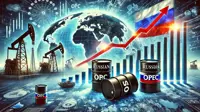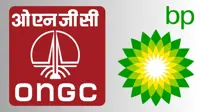India, Bangladesh complete historic exchange of enclaves
01 Aug 2015
Crackers burst and people rejoiced as India and Bangladesh exchanged enclaves (Chhitmahals), ending 68 years of stateless existence for over 51,000 people on either side of the border.
Around 14,000 people living in 51 Bangladeshi enclaves in the Indian territory, and another 37,000 residing in 111 Indian enclaves in Bangladesh, now have a country of their own.
The Bangladeshi enclaves are now a part of India, while the Indian enclaves join Bangladesh marking the end to the complex border dispute, which remained unsettled since the 1947 partition of Indian sub-continent.
India gave away to Bangladesh a total area of 17,160 acres, covering the 111 enclaves in return for 7,110 acres comprising 51 enclaves, ending 68 years of existence of the enclave dwellers.
"Free, finally," wrote the mass circulation Daily Star as residents erupted into celebrations hoisting Bangladesh flag when the clock struck one minute past midnight on Friday night.
As the clock struck 12, people came out of their houses, burst crackers and hugged each other as part of the celebrations with their eyes shining as decades of deprivation ended.
The Bharat Bangladesh Enclave Exchange Co-ordination Committee (BBEECC), an organisation that fought for the rights of the enclave dwellers, celebrated the occasion in Mosaldanga enclave of West Bengal's Cooch Behar district.
BBEECC lighted 68 candles, and screened a documentary highlighting their struggle.
National flags were hoisted in all the enclaves in both sides of the border. However, the Indian tricolour will be subsequently put on half mast as the country is in mourning after the demise of former president APJ Abdul Kalam.
The 111 Indian enclaves are located in the Bangladesh districts of Lalmonirhat (59), Panchagarh (36), Kurigram 12 and Nilphamari (4) while the 51 Bangladeshi enclaves are situated in Cooch Behar district of West Bengal.
The swapping is in pursuance of the documents of the Land Boundary Agreement (LBA) exchanged on 6 June in Dhaka, in the presence of Prime Minister Narendra Modi and his Bangladeshi counterpart Sheikh Hasina.
The LBA was first inked in 1974 by then Bangladesh prime minister Sheikh Mujibur Rahman and former Indian prime minister Indira Gandhi.
"July 31, 2015 will thus be a historic day for both India and Bangladesh. The day marks the resolution of a complex issue that has lingered since independence. It also marks the day from which enclave residents on both sides of the border will enjoy the benefits of nationality of India or Bangladesh, as the case may be, and thus access to civic services, education, healthcare and other facilities provided by the two governments to their respective nationals," said an official statement released by the government.

.webp)
.webp)

.webp)

.webp)


























